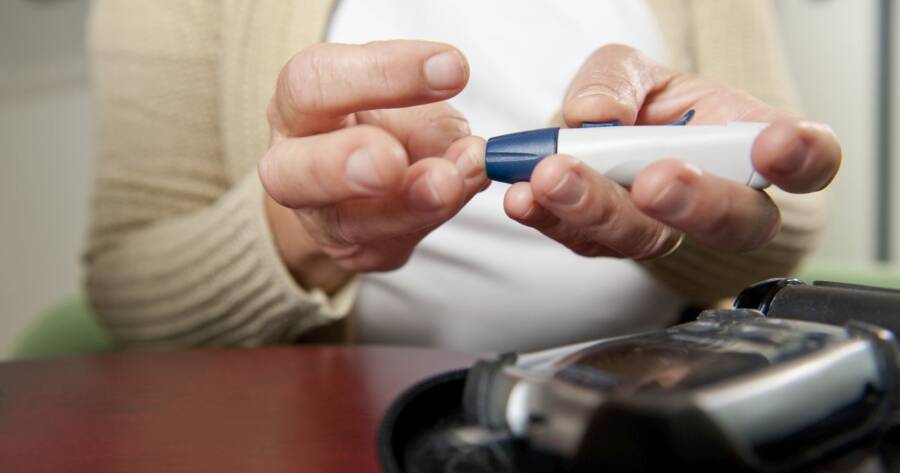A disease that involves a difficulty in processing glucose in the blood so that it can enter the cells for energy, diabetes can impact the body in multiple ways.
Diabetes has also become increasingly common as an increasing number of people in the U.S. are overweight or obese. According to the American Diabetes Association, 30.3 million adults in the U.S. have type 2 diabetes, and 1.25 million children and adults have type 1 diabetes.
Diabetes is closely related to cardiovascular disease and high blood pressure. It is also linked to other conditions, including strokes, diabetic retinopathy, kidney disease, digestive problems, and nerve damage. If you are diagnosed with diabetes, it is important for you to follow the recommendations of your doctor and to closely monitor your diet so that you can manage your diabetes.
What Is Diabetes?
According to the Centers for Disease Control and Prevention, diabetes is a condition that results when your pancreas does not make enough insulin to break down glucose or loses its ability to handle insulin. Glucose is sugar in your blood that comes from the foods that you eat that your body uses for energy. There are three primary types of diabetes, including type 1, type 2, and gestational diabetes.
People who have type 1 diabetes normally develop it as children. It is a chronic disorder that does not have a cure. People who have type 1 diabetes have pancreases that do not produce insulin or that produce very little amounts of it. Mayo Clinic reports that type 1 diabetes may be caused by genetic factors or by viruses.
Type 2 diabetes is the most common type of diabetes, and the CDC reports that between 90 and 95 percent of all people who are diagnosed with diabetes are diagnosed with type 2 diabetes. Type 2 diabetes is most closely associated with being overweight or obese, but there are also other risk factors.
Gestational diabetes is a type of diabetes that develops in some women while they are pregnant. This type of diabetes may go away once the pregnancy is over. However, 40 percent of women who have gestational diabetes develop type 2 diabetes later in their lives. This means that gestational diabetes may indicate that you are at higher risk for developing diabetes in the future.
Who Is at Risk?
There are several risk factors for developing diabetes, and some of these factors may be controlled so that the disease might be prevented. For type 1 diabetes, the risk factors are unavoidable, meaning that the disease cannot be prevented. These factors include genetics and environmental causes such as the exposure to certain viruses.
For type 2 and gestational diabetes, many of the risk factors are controllable and include the following:
- Having a sedentary lifestyle
- Being overweight or obese
- Being over the age of 45
- Having a history of gestational diabetes
- Being African-American or Hispanic
- Having a family history of type 2 diabetes
- Having a baby weighing more than nine pounds
Diagnosing Diabetes
If you are at risk for diabetes or your doctor suspects that you might have prediabetes or diabetes, you will be given one of several different tests for diabetes. Your doctor may administer a glycated hemoglobin test. This test measures the amount of blood sugar that is attached to the hemoglobin in your blood and indicates your average blood sugar levels over the prior two or three months. Your doctor may also give you a random blood sugar test in which your blood sugar is tested at a random time regardless of when you last ate. Another test that might be used is the fasting blood sugar test. In this test, your blood will be tested after you have fasted overnight. The final type of test that your doctor might choose is a glucose tolerance test. In this test, you will have your blood tested after you fast overnight. You will then be given a sugary drink to drink, and your blood sugar will be tested at regular intervals over the next two hours.
If your blood sugar levels are below 100 mg/dl, they are considered to be normal. If your blood sugar levels are between 100 mg/dl and 125 mg/dl, you will be diagnosed with prediabetes. If your blood sugar levels are 126 mg/dl or higher, you will be diagnosed with diabetes.
Treatment Options
The diabetes treatment that might be recommended to you will depend on the type of diabetes you have. You may need to monitor your blood sugar by checking it up to four times per day. If you have type 1 diabetes, you may have to take insulin every day so that you can live.
Many people who have type 2 diabetes also have to take insulin on a daily basis. The insulin may be in an oral form or in injections. Some people who have type 1 diabetes may be treated by transplantations of new pancreases. While a pancreas transplant might help people with type 1 diabetes to no longer be dependent on insulin, there are serious risk factors, so this might only be recommended as a last option. Obese people who have type 2 diabetes and who have a body-mass index of 35 or greater may derive lower blood sugar levels by undergoing bariatric surgery.
In addition to medical interventions for diabetes, your doctor may also recommend lifestyle and dietary changes. Exercising three or more times per week can help you to lower your blood sugar levels. You should also avoid smoking and drinking alcohol. Your doctor may recommend that you eat a diet of lean meats, vegetables, fruits, and whole grains. You should avoid eating saturated fats, refined carbohydrates, and foods that are high in sugar.
On top of following all your treatment recommendations, monitoring your blood sugar regularly, and watching your diet carefully, those with diabetes or are at risk of diabetes should seek out more information. A simple Internet search can provide you with more information on treatment options and diet recommendations.



